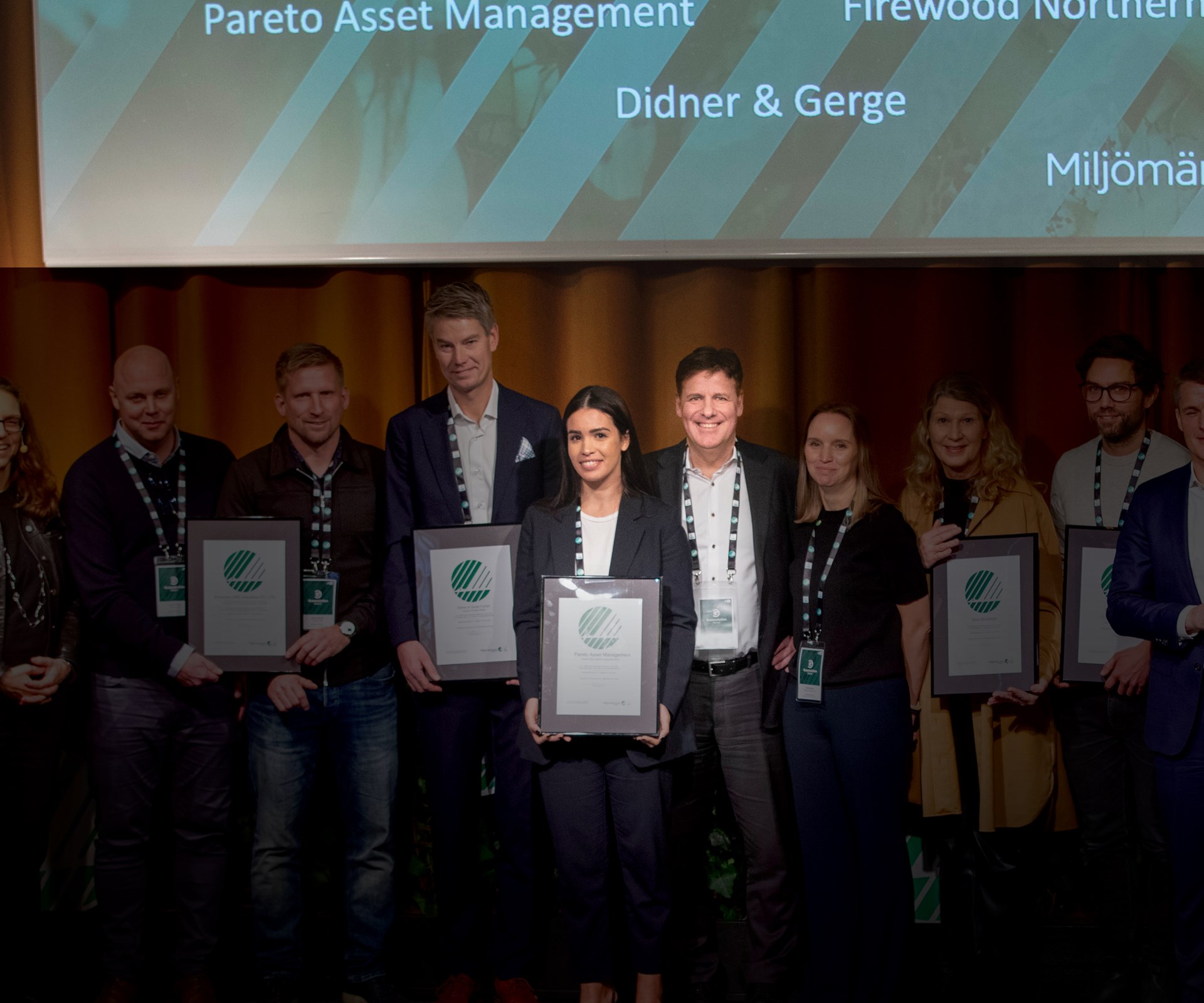In 2018, the fund became the first fixed income fund in Norway and Sweden to receive the ESG Nordic Swan Ecolabel for investment funds. Earlier this year, the label announced they would reinforce the ESG criteria and sent a call to action to all licensees.
For the last months, the fund’s ESG-analyst Nawel Boukedroun has worked together with the fund managers on meeting the label’s new, challenging ESG-criteria. On Friday 25 November the team was awarded the formal approval at an event in Stockholm.

– We are very grateful and proud to be the first fixed income fund to receive a license approval from the Nordic Swan Ecolabel for the application of the second-generation criteria. Overall, the fund attributes and investment practices were in line with the new requirements, she tells us. – That being said, some of the new criteria were more challenging than others and required further reflection. The biodiversity requirement and the EU taxonomy were two of them.
Difficuilt dilemmas is not an excuse
Experts agree that climate change and biodiversity losses should be tackled together. However, unlike climate change, biodiversity losses can occur for different reasons. It is much more complex to grasp and measure companies’ negative impact on species and ecosystems.
The EU Taxonomy[1] also brings some challenges: The framework is still under development and complex, while many companies are not quite ready to report on eligibility and/or substantial contribution.
“Dilemmas should not be an excuse for inaction, and, in the end, our goal is to channel assets towards sustainable activities. ”
– Dilemmas should not be an excuse for inaction, and, in the end, our goal is to channel assets towards sustainable activities. Having that in mind, we have worked to find a relevant approach that will continue to be revised thorough the years. Our methodology was approved by the label, Boukedroun continues.
A third-party assurance of coherence
In 2021, the fund defined a sustainable objective alongside the goal of producing positive returns. The fund has been classified as an Article 9 (“Dark green”) fund under the European Union’s Sustainable Finance Disclosure Regulations (“SFDR”).
– In the context of new regulations, the meaning of “sustainable investments” remains abstract and creates divergences. I believe the new generation of criteria came at the right time. Whilst the European leading sustainability group of experts is looking into common standards, our proposition relies on a structured and transparent way of assessing companies’ sustainability-related aspects, Boukedroun says.
– I am convinced that the Nordic Swan Ecolabel is a great visa stamp. For our clients, it is a third-party assurance of coherence between statements and practices, she concludes.
The main changes
- Enhanced ESG analysis: New criteria have been added to our integration process, entailing stricter climate change requirements in industries with large emissions such as aluminium, steel, pulp and paper and several others. The fund must also track and maintain a proportion of companies with a validated 1.5°C Science Based framework. Further consideration of biodiversity and the EU Taxonomy is now included and should influence fund managers in their bond picking.
- Intensified investment stewardship: Our engagement process has been strengthened and we have defined a systematic way to identify and perform engagement. Here, the Nordic Swan Ecolabel expected us to define and report clear, specific, and time-bound goals for each engagement. The investment team needs to undertake and/or maintain a minimum threshold of discussion and conduct regular assessment of the engagements.
- Provide transparency to investors: The investment policy is made publicly available. The annual sustainability report must include information on actions taken throughout the period, which involves different themes: Exclusions of holdings that no longer fit fund requirements, summary of main engagement dialogues, ESG risk and opportunities with the top holdings, a description of the transition progress of largest greenhouse gas emitters and company laggards in safeguarding biodiversity.
The application of the Swan label is conducted by Miljömärkning Sverige AB, which works on behalf of the Swedish government, and which does not represent any fund industry interests.
[1] The EU Taxonomy is a classification system for environmentally sustainable activities along with detailed technical screening criteria.
